Braids have long been valued not only for their aesthetic appeal but also for their practical and protective benefits. In fact, braids are considered a go-to protective hairstyle for many reasons.
Not only do they help to prevent breakage and minimize hair damage, but they also provide a shield against harsh environmental factors such as wind, sun, and pollution.
Furthermore, braids can help to retain moisture in the hair, reducing the risk of dryness and promoting healthier strands overall.
With numerous braid styles to choose from, individuals can find a look that suits their personal preferences and hair type. From classic three-strand braids to intricate cornrows and box braids, the possibilities are endless.
Additionally, braids offer versatility, allowing individuals to transform their hairstyles with different accessories and adornments. Whether you prefer a simple and chic look or a bold and intricate one, braids can provide both style and protection.
So, why not give your hair some love and rock a fabulous braid hairstyle? Discover the benefits of braids and embrace this versatile hair trend.
What are Protective Hairstyles
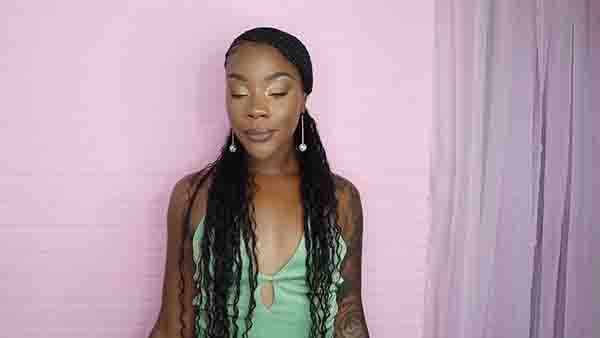
Protective hairstyles are simply styles that create a shield for your natural hair strands, protecting them from potential damaging elements like heat, excess coloring, or over-styling.
Think of these styles as personal bodyguards for your hair, warding off harmful environmental factors. For example, popular styles like braids, twists, and faux locs not only look great but also provide excellent protection.
These hairstyles are mostly low-maintenance, give your hair a break from constant pulling or tugging, and help in maintaining your hair’s moisture and length. However, remember, the effectiveness of a protective style can be undermined if it is styled too tightly.
Do braids actually protect hair
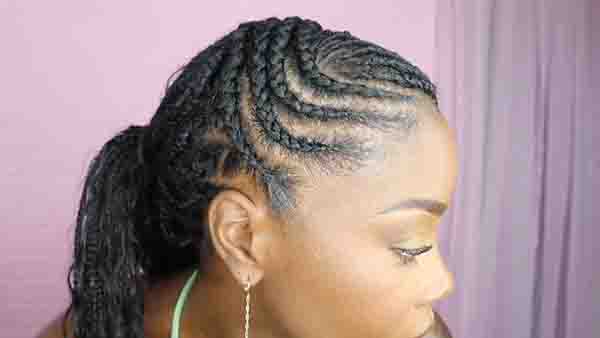
Protective hairstyles like braids are your hair’s guardian angels, shielding it from potential damage caused by excessive heat, styling, and coloring. Here’s why braids are celebrated as a protective hairstyle:
1. Stress-Free Maintenance
Braids are a low-maintenance hairstyle, sparing you the daily styling routine. This means less manipulation and reduced exposure to styling tools, which can contribute to hair damage over time.
2. Physical Barrier
Braids provide a protective buffer around your natural hair. By covering substantial portions of your hair, they act as a shield against physical damage from environmental factors and friction.
3. Tangle and Breakage Prevention
One of the primary benefits of braids is their ability to reduce tangling, breakage, and shedding. These issues are common culprits of hair damage, but braids help keep your hair strands neatly organized and less prone to these problems.
4. Box Braids: An Exemplary Choice
Consider box braids as an example. These braids are not only stylish but also highly effective at protecting your hair. They are a popular choice because they provide both aesthetic appeal and protection. However, it’s crucial to remember not to braid too tightly to avoid causing harm rather than protection.
Benefits of Braiding as a Protective Hairstyle
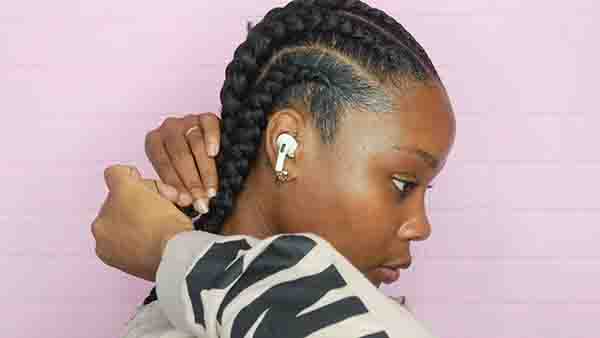
1. Braids are versatile, allowing for many different styles
Braids are an incredibly versatile protective hairstyle. With numerous styles to choose from – like box, cornrow, fishtail, dutch, and more – you can change up your look while keeping hair safe from harmful styling effects.
You can sport them loose, pin them up as an updo, or wear them in a chic crown style. Maintenance is a breeze too; shampoo the scalp and just remember to rinse and dry thoroughly. Most of all, braids bring a touch of style-infused elegance, be it to your gym or a glitzy event. Now isn’t that a win-win?
2. Braids can be worn in many different sizes and lengths
- Braids are an extremely versatile protective hairstyle.
- They can be styled in different ways, including box, cornrow, two-strand, and more.
- Styles range in size from the micro to the super chunky.
- Lengths can vary from short and sweet to long and flowing.
- Box braids, for example, can be worn short, medium, or even jaw-droppingly long.
- They can be made-to-move with individual, free forming styles or kept tight against the scalp.
- Furthermore, styles like the three-strand box braids can add more height and drama.
- Braids also adapt to various scenarios, like being lightweight and quick-drying for a summer holiday.
- The color and overall look can be customized for personal style preference.
3. Braids can help to regulate the scalp’s oil production
- Braids can effectively regulate your scalp’s oil production, a necessary element for hair health.
- This regulated oil distribution aids in maintaining the right amount of moisture balance, preventing excessive dryness or greasiness.
- Braids allow the scalp’s natural oils to evenly coat each hair strand from root to tip, keeping your hair conditioned overall.
- For instance, frequent wearers of box braids or cornrows often notice a decrease in frizz and dryness, courtesy of this efficient oil distribution.
- Remember to apply an organic growth oil to your scalp while braiding for an extra boost.
4. Braids can be relaxing to do
The process of braiding can be a therapeutic and soothing experience. Whether you’re braiding your hair yourself or having it done by a stylist, the rhythmic motion of weaving strands can be incredibly relaxing. It’s a chance to unwind, focus on the task at hand, and even meditate while creating a beautiful hairstyle. Many people find the act of braiding to be a calming ritual that allows them to destress and find a sense of inner peace.
5. Braids can be a fun way to express creativity
Braiding is not just about practicality; it’s also a canvas for creativity. With a wide range of braid styles and techniques to choose from, you can use braids to express your unique personality and style. Experiment with different braid patterns, colors, and accessories to create a look that’s entirely your own. Whether you want a classic, understated style or something bold and eye-catching, braids offer endless possibilities for showcasing your creativity and making a statement with your hair.
What is the significance of braids
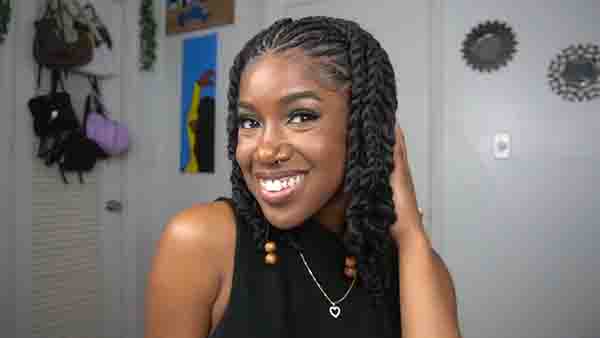
Braids have indeed held significant cultural and historical importance across various societies, each with its unique symbolism and significance. Here are some additional insights into the cultural and historical aspects of braids:
1. African Braiding Traditions
Braids have deep roots in African cultures, where they have been used not only as a form of hairstyling but also as a means of communication and cultural expression. Different African tribes have distinct braiding patterns, which can convey a person’s age, social status, marital status, and even their hometown. Braids often played a crucial role in African storytelling, where they could symbolize a person’s life journey or experiences.
Native American Braiding
Many Native American tribes also have a rich tradition of braiding. For some, braids symbolize unity, strength, and the interconnectedness of life. In some tribes, the act of braiding was seen as a way to connect with nature and the spiritual world.
Viking Braids
In Norse and Viking cultures, intricate braids were not only a symbol of status but also had practical uses. Viking warriors would often braid their beards and hair in intricate designs before battle. These braids were not only decorative but also helped keep their hair out of their faces during combat.
Modern Cultural Significance
In contemporary times, braids continue to be an important part of cultural expression. Many individuals use braided hairstyles to showcase their heritage, celebrate their identity, or express their personal style. They have become a popular form of self-expression and can convey a sense of pride in one’s cultural background.
Braids as Protective Styles
Beyond their cultural significance, braids are also appreciated for their practicality and protective qualities. They are a versatile option for individuals of all hair types to maintain healthy hair and minimize damage from environmental factors.
Braids in Art and Literature
Throughout history, braids have often been depicted in art, literature, and folklore as symbols of beauty, femininity, and strength. Characters in myths and stories have been described with long, flowing braids that hold significance within their narratives.
What braids are most protective
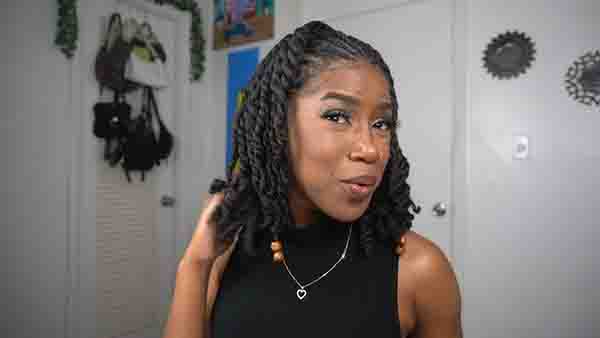
When it comes to protective hairstyles, there are several braids that are known to be particularly effective. Here are a few options:
- Box Braids: These braids are created by dividing the hair into small square sections and braiding them from the root to the ends. Box braids are versatile, low-maintenance, and can be worn for several weeks, providing excellent protection for your natural hair.
- Senegalese Twists: Similar to box braids, Senegalese twists are created using two strands of hair instead of three. They are lightweight, durable, and can be styled in various ways. This style provides protection while retaining the natural moisture of your hair.
- Ghana Braids (also known as Banana Cornrows): Ghana braids involve creating cornrows with extensions added for length and thickness. This style is not only highly protective but also gives you the flexibility to experiment with different patterns and designs.
- Marley Twists: These twists are achieved by using Marley hair extensions, which closely resemble natural hair texture. Marley twists offer excellent protection and give your hair a fuller appearance.
- Fulani Braids: Fulani braids are characterized by a central parting with braids or twists on either side. These braids often feature unique accessories such as beads or cowrie shells. They are not only protective but also culturally significant, drawing inspiration from the Fulani people of West Africa.
- Lemonade Braids: Inspired by Beyoncé’s iconic Lemonade album, these braids are created with small, side-swept cornrows that resemble lemon seeds. Lemonade braids are not only fashionable but also serve as a protective style for natural hair.
- Jumbo Braids: Jumbo braids are thicker and larger than traditional braids, making them a quick and easy protective style. They can be customized with various braid patterns and are ideal for those who want a bold and voluminous look.
- Crochet Braids: Crochet braids involve attaching braided extensions to your natural hair using a crochet needle. This method allows for versatility in styles and textures while protecting your own hair underneath.
- Knotless Braids: Unlike traditional box braids, knotless braids start with your natural hair and gradually add extensions, reducing tension on the scalp. They are known for their natural appearance and are gentle on the hair.
- Micro Braids: Micro braids are incredibly small and thin braids that can be worn for extended periods. They provide excellent protection and can be styled in various ways.
When should you take braids out?
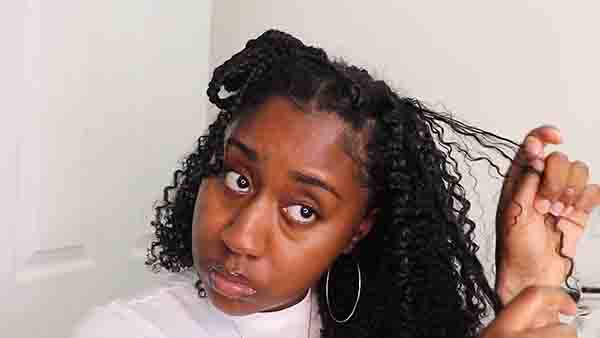
The ideal time to take out braids can vary depending on factors such as your hair type, the style of braids, and how well you’ve maintained them. Here are some general guidelines to help you decide when to remove your braids:
- Duration: It’s generally recommended not to keep braids in for more than 6-8 weeks. Keeping them in for an extended period can lead to matting, tangling, and breakage.
- Hair Type: If you have finer or more delicate hair, you may want to remove your braids sooner, around the 4-6 week mark, to prevent damage. Coarser or thicker hair may be able to keep braids in for a bit longer.
- Maintenance: Proper maintenance of your braids, including regular washing, conditioning, and scalp care, can extend their longevity. If you’ve taken good care of your braids, you might be able to keep them in for a bit longer.
- Style Goals: Consider your style goals. If you’re looking for a shorter-term protective style or want to change your look, you can take out your braids whenever you’re ready.
- Hair Health: Pay attention to your hair’s health. If you notice signs of discomfort, itching, excessive hair shedding, or if your natural hair is becoming severely tangled, it’s best to remove the braids promptly to prevent damage.
- Consult a Stylist: If you’re unsure about the right time to remove your braids, consider consulting a professional stylist. They can assess the condition of your hair and provide guidance tailored to your specific needs.
Here’s a step-by-step guide to safely remove your braids:
- Gather Your Supplies: You will need a pair of sharp scissors, a wide-tooth comb, a detangling conditioner or oil, and a lot of patience.
- Divide Your Hair: Start by dividing your braided hair into sections. Smaller sections make the process more manageable.
- Trim the Ends: Carefully trim the ends of each braid, just above the point where your natural hair ends. Be cautious not to cut your own hair.
- Apply Conditioner or Oil: Apply a detangling conditioner or oil to each braid section to help loosen the braids and reduce friction.
- Gently Unravel: Starting from the ends, gently unravel each braid, working your way up to the roots. Avoid pulling or tugging on your hair to prevent breakage.
- Use the Wide-Tooth Comb: After removing each braid, use a wide-tooth comb to detangle any remaining knots or shed hair. Start from the tips and work your way up to the roots.
- Wash and Condition: Once all the braids are out, give your hair a thorough wash and conditioning treatment to remove any residue and restore moisture.
- Protective Style: After taking out the braids, consider giving your hair a break by using other protective styles like twists, buns, or silk wraps.
FAQ
Braids themselves don’t halt balding. However, they can help protect existing hair by reducing manipulation, breakage, and exposure to damaging elements, which may contribute to healthier hair.
Braids can damage any hair type if done improperly. For Caucasian hair, ensure they’re not too tight and are well-maintained to minimize potential damage.
Sleeping with wet hair in a braid can be detrimental. Wet hair is more fragile, and sleeping with it in a braid may lead to increased breakage and potential mold growth.
Normal braids can damage hair if they’re excessively tight, heavy, or left in for extended periods. Gentle braiding techniques and proper care are crucial to prevent damage.
Cornrows are protective because they distribute tension evenly across the scalp, reducing stress on individual hair strands. They also help prevent tangling and breakage, promoting hair health.
Trimming split or damaged ends before braiding is recommended. It ensures a clean start and prevents further splitting while your hair is in braids.
Braiding African hair can help protect it by reducing tangling, breakage, and exposure to harsh elements. It’s an essential part of hair care in many African cultures.
Braids hold cultural significance, representing heritage, identity, and artistic expression in Black culture. They also offer practical hair protection in various styles and forms.
Braiding hair nightly can help prevent tangling and breakage, maintaining the style’s longevity and protecting hair during sleep.
Braids had a complex history during slavery, serving as a form of communication, cultural preservation, and resistance. They were essential for identity and connection.
The maximum time for keeping braids in depends on your hair type and braid size. Generally, 6-8 weeks is a common duration, but consult a stylist for personalized advice.
Allowing braids to air dry is usually fine, but ensure they’re not too wet when you braid initially. Proper drying can prevent mildew and maintain hair health.
Touch-up frequency depends on hair growth and braid style. On average, every 4-6 weeks is common, but consult with your stylist for precise recommendations.
Protective styles’ longevity varies, but box braids, Senegalese twists, and faux locs tend to last longer due to their durability and resistance to frizz and unraveling.
conclusion
Braids are undeniably an effective and versatile protective hairstyle. They offer a multitude of benefits, including stress-free maintenance, physical barrier against environmental damage, prevention of tangles and breakage, and various styling options.
Braids also serve as a shield against heat and promote healthy hair growth by reducing exposure to damaging elements. Moreover, they help regulate scalp oil production, prevent tangles, and can be a relaxing and creative experience.
Braids have cultural and historical significance across different societies, and they continue to be a means of self-expression. When choosing braids for protection, options like box braids, Senegalese twists, Ghana braids, and others are highly effective.
The key is to remove them at the right time, maintaining hair health and ensuring lasting benefits.

